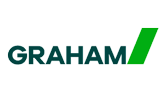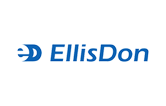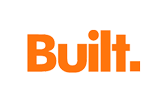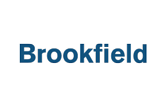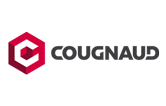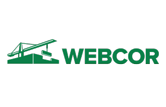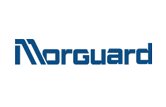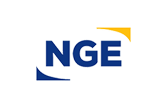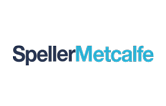COVID-19 & Construction: Our Healthcare Projects Have Dried Up
My Fieldwire colleagues and I have been speaking with industry leaders in construction about working through the COVID-19 pandemic. This is my interview with Peter Chelico, General Manager at Schaffran Construction in Portland where many healthcare projects unrelated to the COVID response have been but on hold.
[Yves Frinault] Hey, everyone. I’m Yves. I’m the CEO of Fieldwire and I am here today with Peter Chelico who is the General Manager at Schaffran Construction and Ray of course who is our Head of Marketing.
Peter and his team just wrapped up a GI project for a hospital in Portland. He’s also involved with design and pre-construction on two COVID-19 response projects. We will go into the specifics of what those projects are about. We’re looking forward to talking a bit more with him about that.
Peter, first of all, thanks for joining us. Before we jump into some questions about your projects, can you tell us a little bit more about yourself and Shaffran construction?
[Peter Chelico] Schaffran Construction is a family-owned small construction company that's been working for about three decades on specialty tenant improvement projects mainly in Oregon Health Sciences University on their main and satellite campuses. I joined the company a couple of years ago after I sold a different business. I have been learning a lot about construction and a lot about healthcare construction.
[Yves Frinault] What's defining about being in a family-driven construction business?
[Peter Chelico] We're a small team. We're a collaborative team. We have a certain set of values and a commitment to the institution that we work at. When you're doing sustaining work in an institutional environment like that you need to be somewhat purpose-driven.
[Yves Frinault] That makes sense.
[Ray Mina] Peter, what— Just for the rest of our listeners, what's the situation like in Portland now as it relates to COVID-19?
[Peter Chelico] Similar to what we were discussing about what's happening in San Francisco. I think we did social distancing because of the example of Seattle. Social distancing came in early here. Everybody talks about bending the curve down. I think the curve has been bent down. It seems like the city is overall responding well to caseload at the hospitals, it's probably at the lower end of what they've expected. Everybody is really staying home.
[Ray Mina] I know that you've been working on a healthcare project there. How is the rest of construction in Portland impacted? Are all projects still going or are they trying to categorize essential projects?
[Peter Chelico] We just have anecdotal evidence. Most of the subs we work with are in healthcare. We met with some of them earlier this week to look at some COVID response projects. They said that all their healthcare stuff is basically dried up.
I do know anecdotally that there are people working on school projects because schools are empty so I think some of those projects have been accelerated. The Governor of Oregon did deem construction as an essential activity. When you do drive around you do see projects large and small continuing to a certain extent.
[Yves Frinault] If we look at the numbers, I think the West Coast reacted very early to the COVID-19 epidemic so we don't have quite as big of a capacity issue yet in hospitals as maybe New York, for example. That's a good transition. As Ray was saying, you just wrapped up a healthcare project for a client. Can you tell us a little bit more what that project was about and how it related to the current situation maybe?
[Peter Chelico] That project wasn't COVID-related. That was a project in a healthcare space in the hospital. It was a research project that we were already working on. We made the decision as a team to shut that project down earlier than we got direction from the hospital that they were on modified operations because we felt that we had to figure out what we were going to do for our team and subcontractors. We got that in terms of safety in response to COVID. We worked on that, we figured that out, we resumed that project last week, and we wrapped it up today. We will have inspections on Monday. All client teams are working remotely now, so it's an empty space, essentially.
[Yves Frinault] Interesting. What were some of the critical decision factors then that you considered after shutting down the project? What do you think we need to figure out to be able to resume work?
[Peter Chelico] Obviously the first consideration is how do we keep our team members safe? What were the procedures and processes that we needed to implement to do that? What were the liabilities that we faced, what were the dangers that we faced? How do we get guys on a jobsite to actually work? How do we get subs on the jobsite? How do people interact?
Obviously you kind of start at the top and you realize, depending on the size of the space — and this was a small project and so it was also a small space — you can't stack any of your subs. Each trade has to— You're lengthening your schedule and stretching it out a little bit. Luckily, while we were trying to make this decision, we were looking at a project at an off-site surgery center. We had to go and look at it and when we did, they made us sign in and took our birth dates, names, and our temperatures. So we immediately ordered thermometers. Thinking, That's a good idea.
It has just been this kind of evolutionary process. It's iterative, taking best practices from everybody, and we put together a document that we gave out to our subs and we got feedback from them.
[Ray Mina] Follow-up there, Peter. Because it's interesting, we have heard it from a lot of other companies that we have been talking to. It sounds like there just wasn't a playbook for this. You had to kind of piece it together from those first-hand experiences and interactions. Other than the example you gave us about the thermometers, was there any place that you were able to find information and best practices? Did you have a colleague at another company or was it truly pieced together?
[Peter Chelico] It was pieced together really from our team working together, and then we do get guidance from the excellent safety team, the construction safety team at Oregon Health Sciences University — Gene Patrick and his teams. We had dialogues with them. We got the hospital protocols, we had all that information, and had a conversation with them. Really thinking through it and trying to be logical and seeing what made sense in terms of safety.
The one point I would make is we started to bring this up early with our team. Because it is construction, there's a little bit of machismo, I would say, or they think you’re overreacting. I came into the office one day, maybe three weeks ago, or I can't remember what point in time, with bottles of Lysol, rags, and gloves. I was wiping handles and my colleagues were kind of dismissive of all that. Maybe all of us were at some point in some ways.
[Yves Frinault] It's really interesting because the situation has been a driving force for mentalities to evolve quite a bit. There's a tendency, as you said, to muscle through stuff on construction. Yes, you're sick, but you're still showing up on-site because the work has to get done. In this situation it's creating a bit more balance and it's making people more comfortable with talking about those subjects. I see the same thing on the technological front where some companies are using that as a force to change how they're doing things. Because yes, part of their crews are remote or operating with reduced crews on-site so they need to be more efficient, so it's a very interesting evolution for all of us in the industry right now.
[Peter Chelico] Agreed.
[Ray Mina] Peter, in addition to the healthcare project that you just wrapped up today, you mentioned to me that you're working on two COVID-19 response projects as well. You mentioned that you're in the design and preconstruction phase. Could you— For me, I don't know much about what a COVID-19 response project would look like. Could you just walk us through what those are and how you're going about that?
[Peter Chelico] Yes. The project we're working on right now, the one project we're really focused on in our daily meetings, is a telemedicine program, basically a virtual ICU. We were awarded that project, the preconstruction. We started working on that in January before any of this arose. Obviously, as a response to COVID-19 that project has been accelerated. We are having daily meetings with the design team and through that process trying to figure out how we can design, build, permit, and accelerate everything. The project was originally supposed to be delivered in September. Now we are trying to move that delivery up to July. A lot of what we have run into is needing to go outside of the normal process, right? The City of Portland has been great. They have come up with an alternative, accelerated COVID project permitting process. They've tiered all of their permitting: Tier #1, Tier #2, Tier #3, Tier #4. Tier #1 is all hospital work, but even within Tier #1, if it's COVID, they're turning around permits within three or four hours.
[Yves Frinault] Wow.
[Peter Chelico] Yeah.
[Yves Frinault] That's a big change. We're seeing once again, the situation being a driving force that impacts really common design and build processes here. What are other ways, other than permitting, that has helped you accelerate the process right now?
[Peter Chelico] What we're trying to do is figure out ways to split the project into— We usually wait until we have full design documents and go in and just build everything. We're trying to figure out what we can do in terms of infrastructure, all the MEP work, what can we piece out and just get guys working on because once again we can't trade-stack. We can't get as many people into this space as we want to because we have to social distance. We have to start looking at things and say if you're going to have a crew of more than one person in there, how can you perform this work? How can we do it? We are trying to figure out ways to get people in early and chop the job up a little bit more. It's inefficient in a certain way, but it's what we have to do.
We have to obviously look at supply chains and lead times. That's a constant issue in the design now. Is this flooring available now? We have another project that we just started working on for COVID response. Somebody bought all the flooring at the distributor in Oregon. They foresaw this coming and bought all the flooring that we would have wanted. Our sub then had to get a vendor in Arizona.
[Yves Frinault] Yes. If we go into the supply chain a little bit, because it's a very relevant subject. Even if we're keeping the projects going, if you can't find the materials, it's going to cause issues. Are you seeing specific types of things that you're running out of? Or are you able, as you've said, to replace with a different supplier in a different state?
[Peter Chelico] We haven't even gotten to the part in the design where we are that specific. But we look at— Because it's a large institution, there are building-specific finishes for a huge building. What we have started with is the building standards. We have the vendors check on them on a repetitive basis. So we still kind of have this lead time, but the caveat with everything is always that it depends on what happens with manufacturing, what happens with the supply chain. Many things are made overseas and shipped here. We're looking at what the inventory is, what the stock is at a facility somewhere across the country, and what happens with trucking after that. In regard to the projects we are working on, it's more that there is a sort of matrix being put together by the design team based on the building standard finishes and then the availability, the pricing, and the unknowns. Just trying to land on things and see how it works. I don't know how it's going to work, to be honest with you.
[Yves Frinault] As a company, I think Schaffran is very focused to start with so it makes sense for you to focus on COVID response projects. Is that a company strategy right now, to go on bids for those projects? Is that a very specific market? What kind of volume do you see in COVID response projects compared to what might be the normal activity for the company?
[Peter Chelico] Most of our normal projects in the healthcare environment are shut down.
[Yves Frinault] OK.
[Peter Chelico] As I've said, we mainly work with one institution, and we're in the process of expanding, but most of those have been put on a hiatus as the institution looks for funding. It's a very complex situation where healthcare institutions are focused almost solely on COVID and their costs for that go up. All their elective procedures are gone, so their revenue goes down. They have put a hold on a myriad of construction projects across the institution.
Really, except for some compliance projects that we have, COVID is what we're responding to. We are just responding to the need of the institution and the project managers to reach out to us. There's not a formal— What will happen is there will be growth in the COVID response programs, because as we return to normal a situation like this exposes the cracks in the dike, so to speak, and you have to go back and repair these things or come up with a strategy for whatever happens next.
[Yves Frinault] One of the big subjects right now as this becomes the new normal is to switch our attention to the recovery phase, which is expected to be quite long. What we're talking about is building sustainable capacity to handle the long tail of COVID being around, for, I don't know, maybe months. Maybe most of the activity is resuming, but having the capacity to handle it on the healthcare side.
I wasn't aware of the point that you just made that most large healthcare facilities have seen their costs go up very significantly but at the same time, there is a significant part of their revenue now being impacted in not as quite a positive way so that even those essential operations having to shut down like for example some of the work they're doing on their facilities.
Is there anything that you could share beyond that great piece of knowledge that would benefit our audience in a broader sense? Maybe that you've done as a company that you thought was really a good move or right decision over the last few weeks?
[Peter Chelico] Nothing earth-shattering or specific, but I think what this kind of event does is it makes you refocus on your values as a team and your culture. You think about what you're trying to accomplish and how you're trying to accomplish it.
One of the great things about the company, as I have said, is it's a family company with strong values. It has strong values about taking care of our clients, taking care of our partners, and obviously taking care of our employees above and beyond all. You don't want to say that this has been a good thing, in a certain sense, but it has just reinforced why we do what we do, how we try and do it, and how we value the people we work with and that we work for. I think that's just a reminder. We all need to work to help each other.
[Yves Frinault] I think that's the best way to finish this discussion. Once again, when the situation changes and the company has to adapt, the one thing that remains constant is the values. That's what you can align people on.
Peter, thanks very much for being with us today. Once again, surprisingly valuable content that comes out of those short discussions and I am looking forward to talking more.

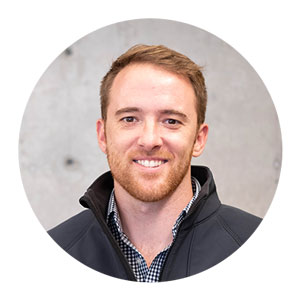 Yves Frinault •
Yves Frinault • 
